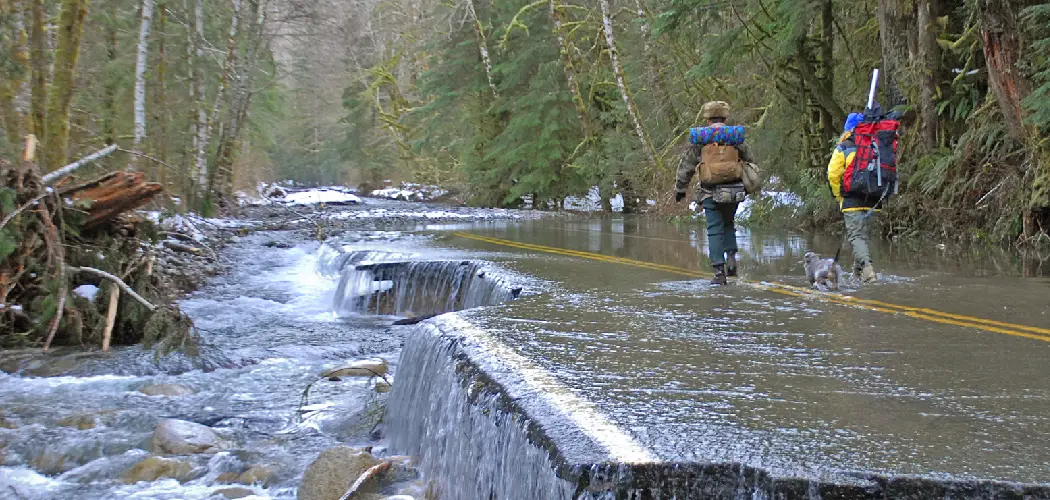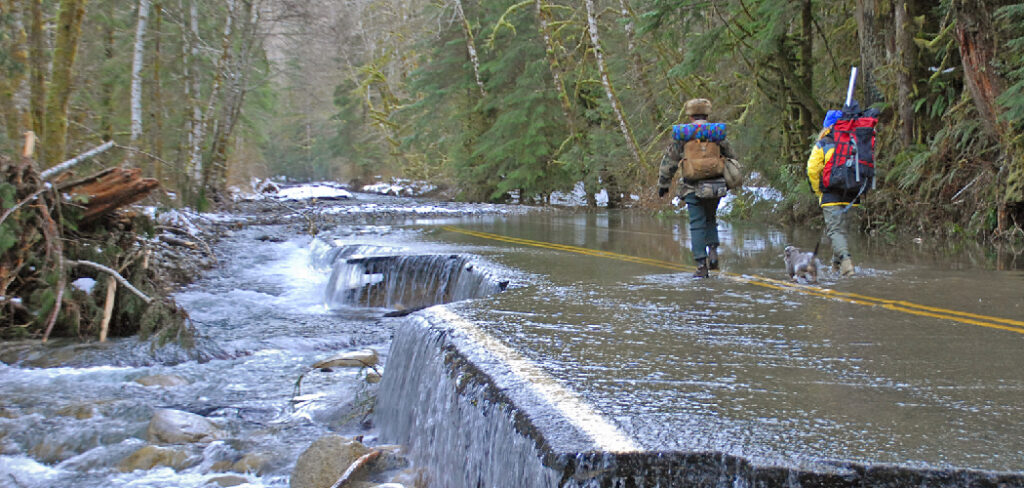
Concrete patios are a beautiful addition to any home and should be enjoyed, not avoided. Unfortunately, when water starts ponding on the surface of your concrete patio, it can make it difficult or even dangerous to use. In such cases, you may wonder how to fix water ponding on your concrete patio to restore it to its former glory.
The main advantage of fixing water ponding on a concrete patio is that it prevents the possibility of flooding and potential damage to furniture, floors, or other items in the area. Furthermore, properly addressing this problem will ensure that your concrete patio looks its best and maintains its integrity.
It is also important to ensure that standing water does not become stagnant and create an unsafe environment for those walking in the area. In this blog post, You will learn in detail how to fix water ponding on concrete patio.
What Causes Water Ponding on a Concrete Patio?
A few different factors can cause water ponding on concrete patios. First, it could be due to improper drainage or grading of the patio itself. If the patio is sloped in the wrong direction, water can pool up instead of being directed away from the patio. Another possible cause for water ponding is that the patio has not been seal coated correctly or the seal coat is wearing away.
Seal coating helps to protect the concrete surface from moisture and can prevent water ponding issues when applied properly. Other possible causes include clogged gutters, downspouts that prevent water from being directed away from the patio, or damage to the slab itself.
If the slab is cracked or uneven, it can cause water to pool into certain areas instead of running off.
Step-by-Step Processes for How to Fix Water Ponding on Concrete Patio
Step 1: Inspect the Patio
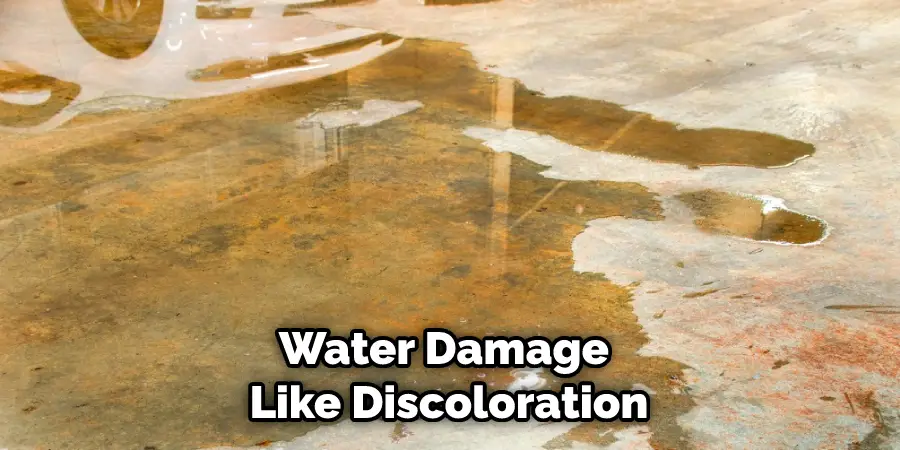
Inspect the patio for signs of water damage like discoloration, cracks in the concrete, and abnormal elevation changes. If you find that there are elevation changes or uneven spots, use a shovel to level out the area. You may also need to use a portable laser-level tool if needed.
Step 2: Install a French Drain System
If the patio slopes towards the house, you may need to install a French drain system. This will help redirect water away from the house and prevent ponding.
To do this, you will need to excavate around the perimeter of your concrete patio, create trenches for drains, fill in with gravel and sand, place drains on each side of the patio, install a sump pump to collect excess water, then backfill the trenches with dirt.
Step 3: Repair Cracks
Repair any cracks found in the concrete surface using an appropriate filler or repair product. This will help prevent future water damage from occurring. If the patio is flat, you may need to install a slope to help encourage water runoff. This can be done by using concrete pavers that are slightly higher on one side and lower on the other.
Step 4: Add Water-Resistant Coating
Applying a water-resistant coating such as epoxy or polyurethane over the concrete patio surface is always a good idea. This will help create a protective layer that will keep water from seeping into cracks and crevices. Install a drainage system near the house or around surrounding areas to help direct water away from your patio.
This can be done by using French drains, sump pumps, or other drainage systems.
Step 5: Install Gutters and Downspouts
Gutters and downspouts are great for preventing water from pooling on your patio. Ensure that the gutter system is properly installed with a pitch to help encourage water runoff away from your home. Consider adding a retaining wall if your patio is built up and surrounded by flower beds or other landscaping.
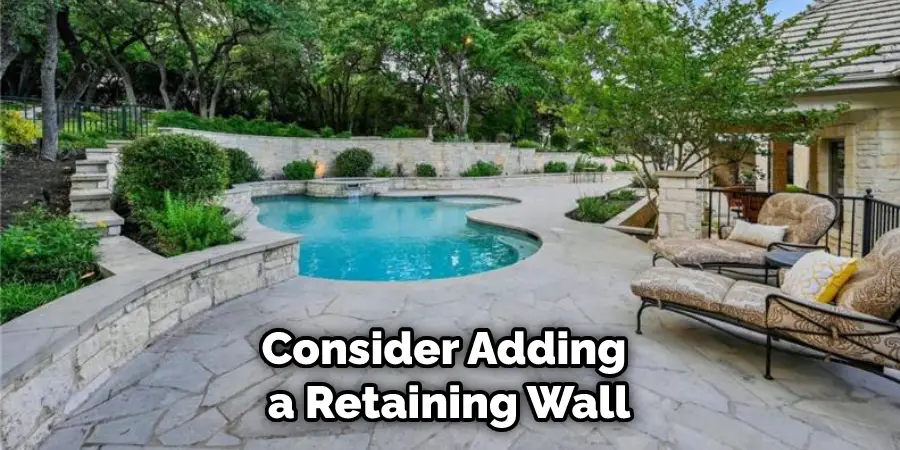
This will help prevent water from pooling on the surface of your patio.
Step 6: Install an Overflow System
Install an overflow system to help divert excess water away from your patio in the event of heavy rains. This can be done by connecting a hose to a drainage system on either side of your patio. Lastly, make sure you adjust your sprinkler system so that it’s not spraying too much water onto your patio.
This will help prevent water from pooling on the surface and causing damage.
Following these steps will help you properly fix ponding water on your concrete patio, saving you time and money in the long run. Remember to always consult with a professional when it comes to any major home improvement projects.
Safety Precautions for How to Fix Water Ponding on Concrete Patio
- Protect yourself and those around you by wearing safety glasses, gloves, a dust mask, and other necessary gear when fixing water ponding on concrete patios.
- Carefully inspect the area before fixing water ponding on concrete patios to identify any potential hazards.
- Make sure to completely drain the area before attempting to fix water ponding on concrete patios to remove all water.
- If there are any objects blocking the drainage system, remove them before beginning work on fixing water ponding on concrete patios.
- Make sure to have the right tools and materials on hand to make fixing water ponding on concrete patios easier and more efficient.
- Depending on the type of surface you’re working with, apply a waterproof sealant or membrane to the area being worked on to prevent further water ponding from occurring.
- After fixing water ponding on concrete patios, it is important to clean up the area and dispose of any materials used properly.
- Lastly, after fixing water ponding on concrete patios, it is important to monitor the area to identify any potential future issues. This will help ensure that water ponding does not occur again in the same spot.
By following these safety precautions for fixing water ponding on concrete patios, you can tackle this issue safely and efficiently.
How Can You Prevent Future Water Ponding on Your Concrete Patio?
Once you have fixed the water ponding on your concrete patio, it’s important that you take steps to make sure it doesn’t happen again. There are a few things you can do to make sure this doesn’t happen again in the future:
- Ensure Proper Slope: One of the main causes of ponding water is the improper slope, so it’s important to ensure that your patio has the appropriate slope for drainage. This means that you should have a 1-2% grade towards the exterior of your home or another outlet point.
- Install Drainage System: A good way to prevent future ponding water is by installing a drainage system. This can include everything from a series of trenches or drains to channel the water away from your patio to installing a sump pump to draw the water away from your patio and into an appropriate outflow area.
- Seal Your Patio: Sealing your concrete patio is also important for preventing future ponding water. Not only does sealing your patio protect it from future damage, but it also creates a barrier that helps prevent water from seeping into the concrete and creating ponding areas.
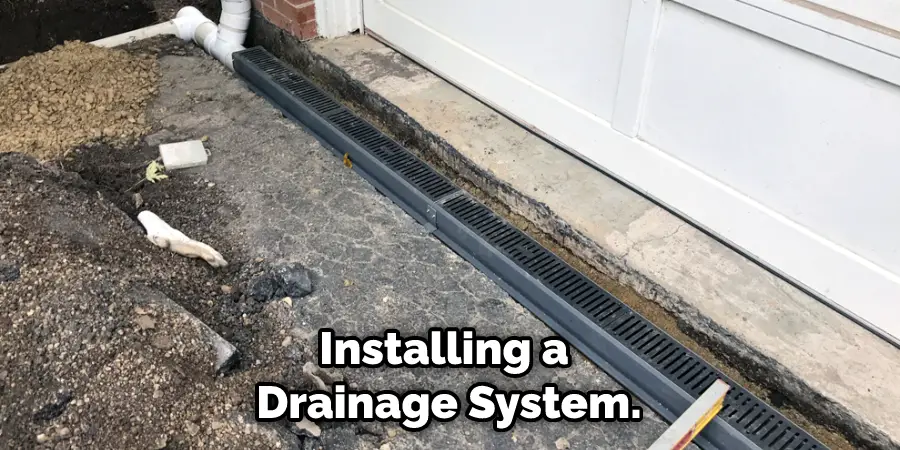
Taking these steps can help ensure that your concrete patio is free of any future water ponding issues. With proper maintenance, you will have a safe and enjoyable patio that you can enjoy for many years to come.
Are There Any Health Risks Associated With Water Ponding on a Concrete Patio?
Water ponding on a concrete patio may not seem like a major health hazard, but it can cause long-term damage to the structure of your home. Over time, water ponding can erode and weaken the foundation of your patio, leaving it more vulnerable to collapse or cracks.
To prevent the health hazards associated with water ponding on a concrete patio, it is important to take proactive steps to fix the issue. The most effective way to address water ponding is by utilizing one of several methods for draining excess water from the surface. Here are some common techniques for fixing water ponding on a concrete patio:
- Installing French Drains: These drains typically consist of perforated pipes installed along the patio’s edge. The pipes collect and channel excess water into an area with better drainage.
- Slope Modification: If your patio is perfectly level, it can collect water in puddles. Adding a slight slope to the surface can help direct water away from the patio area and reduce ponding.
- Sealing Cracks: In some cases, cracks or other imperfections in the concrete surface can cause water to accumulate around them. Sealing these small cracks with concrete sealant can help keep water from ponding on the patio surface.
- Replacing Damaged Patio Sections: If the concrete is severely damaged, it may need to be replaced to fix the issue. This can be costly and should only be considered a last resort.
By taking these steps, you can effectively address any water ponding issues on your concrete patio and keep your family safe from its health hazards.
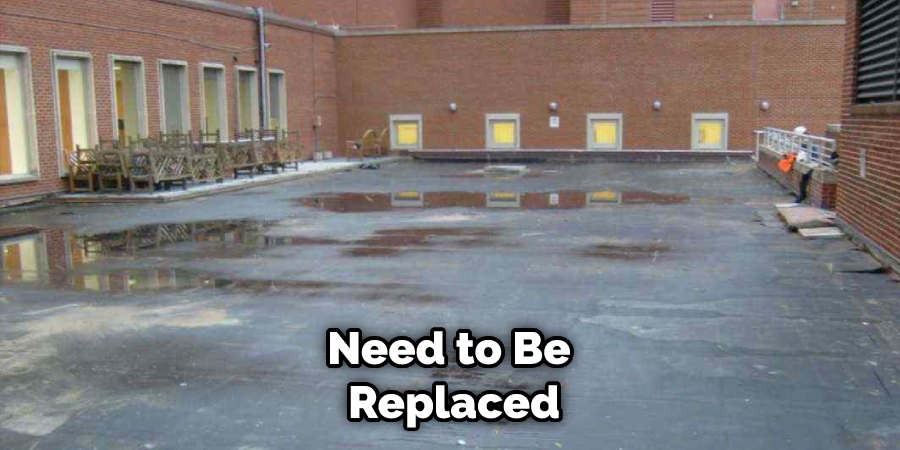
Conclusion
In conclusion, fixing water ponding on a concrete patio is not impossible. With the right tools and knowledge, it can be done quickly, affordably, and effectively. From clearing out drain clogs to filling in depressions with self-leveling concrete and sealing cracks or joints, there are several common solutions that you can use to repair your patio.
Ultimately, the best way to stop water ponding on a concrete patio is prevention. Regularly inspect and clean out your drains, fill in any low spots with self-leveling concrete, and seal cracks or joints as soon as they appear to keep water from getting into your concrete patio in the future.
I hope this article has been beneficial for learning how to fix water ponding on concrete patio. Make Sure the precautionary measures are followed chronologically.
About
Outdoor Fixes is a distinguished figure in the world of Diy design, with a decade of expertise creating innovative and sustainable Diy solutions.
His professional focus lies in merging traditional craftsmanship with modern manufacturing techniques,
fostering designs that are both practical and environmentally conscious. As the author of diy,
outdoorfixes delves into the art and science of outdoorfixes-making, inspiring artisans and industry professionals alike.
Education RMIT University
(Melbourne, Australia) Associate Degree in Design (Outdoor Fixes) Focus on sustainable design, industry-driven projects,
and practical craftsmanship. Gained hands-on experience with traditional and digital manufacturing tools, such as CAD and CNC software.
Nottingham Trent University
(United Kingdom) Bachelor’s in outdoorfixes.com and Product Design (Honors) Specialized in product design with a focus on blending creativity with production
techniques. Participated in industry projects, working with companies like John Lewis and Vitsoe to gain real-world insights.
Publications and Impact
In diy, Outdoor Fixes his insights on indoor design processes, materials, and strategies for efficient production.
His writing bridges the gap between artisan knowledge and modern industry needs, making it a must-read for both budding designers and seasoned professionals.

